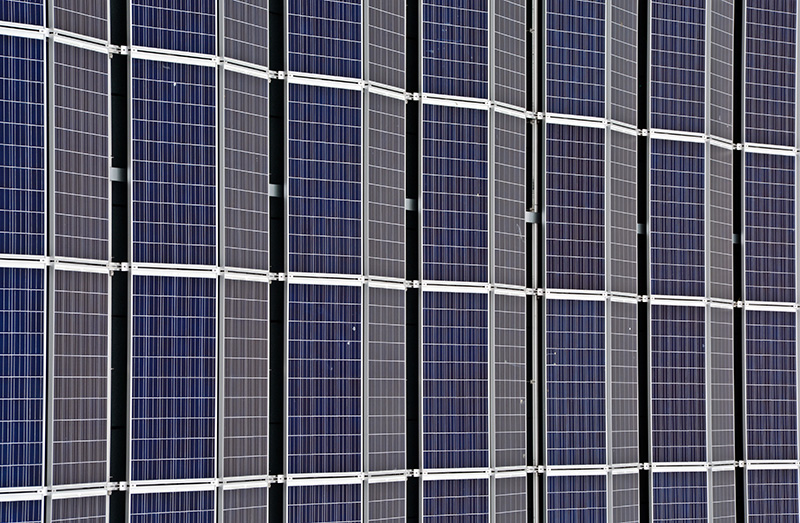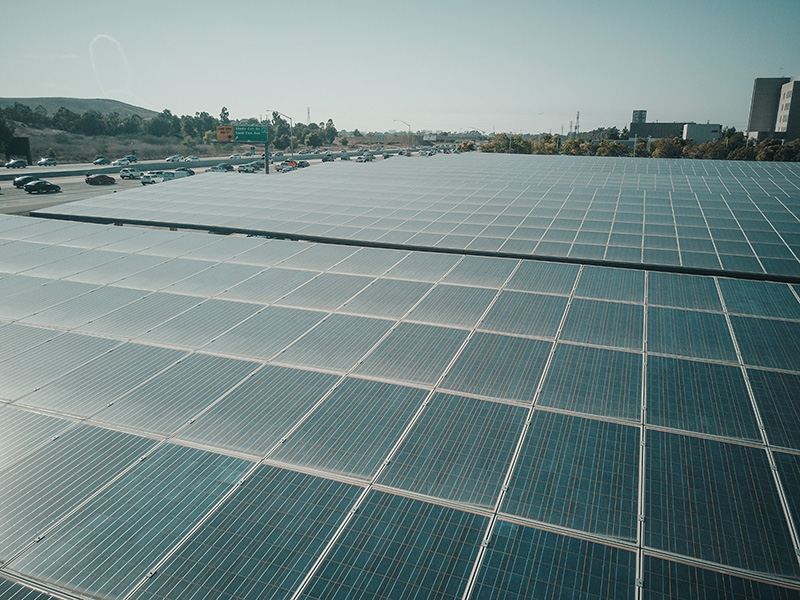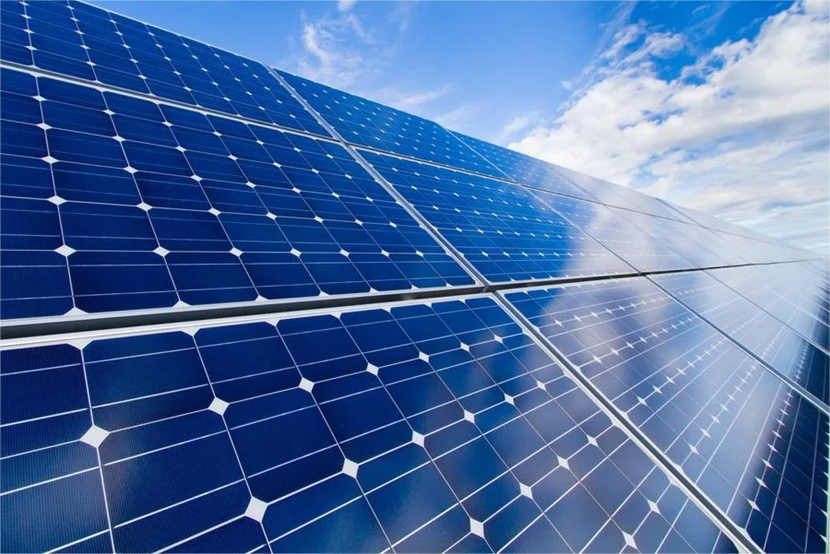Description
Solar cells are essential because they offer a sustainable, renewable energy source, converting the sun's power into electricity without greenhouse gas emissions. Unlike fossil fuels, which deplete resources and harm the environment, solar cells present a clean alternative, promoting energy independence and accessibility even in remote areas. Their role becomes crucial in addressing global environmental and energy challenges.
The Growing Demand for Sustainable Energy
Environmental Concerns with Fossil Fuels
- Air Pollution:The combustion of fossil fuels releases large amounts of harmful pollutants, including sulfur dioxide, nitrogen oxides, and particulate matter. These pollutants can lead to a variety of health issues in humans, such as respiratory diseases and cardiovascular problems.
- Water Contamination:Extraction and processing of fossil fuels, particularly coal and oil, can result in water contamination. Accidental oil spills, like the Deepwater Horizon incident, have catastrophic effects on marine ecosystems.
- Land Degradation:Mining activities, especially coal mining, lead to habitat destruction, soil erosion, and deforestation. This not only affects local flora and fauna but also disrupts the lives of local communities.
- Non-renewable Nature:Fossil fuels are finite resources. As we continue to extract and consume them at an alarming rate, the reserves deplete, leading to energy security concerns and geopolitical tensions.
Global Climate Change and the Role of Renewable Energy
- Greenhouse Gas Emissions:Fossil fuels are the primary source of greenhouse gas emissions, especially carbon dioxide (CO2). These gases trap heat in the Earth's atmosphere, leading to the greenhouse effect and global warming.
- Sea-Level Rise:As global temperatures increase, polar ice caps are melting at an unprecedented rate. This leads to rising sea levels, threatening coastal regions and island nations.
- Changing Weather Patterns:Climate change is responsible for more frequent and severe weather events, including hurricanes, droughts, and heatwaves. This has direct implications for agriculture, water resources, and human settlements.
- Renewable Energy as a Solution:Transitioning to renewable energy sources, like solar, wind, and hydroelectric power, can significantly reduce greenhouse gas emissions. These sources are sustainable, abundant, and have a minimal environmental footprint. For instance, solar energy harnesses power directly from the sun, providing a clean and efficient alternative to fossil fuels.
- Economic Benefits:Investing in renewable energy can spur economic growth, create jobs, and reduce dependence on imported fuels. Moreover, as technology advances, the cost of renewable energy infrastructure is steadily decreasing.
By understanding the environmental concerns with fossil fuels and the potential of renewable energy, we can make informed decisions to shape a sustainable future.
Working Principle of Solar Cells
Photovoltaic Effect
The photovoltaic effect is the fundamental process that enables solar cells to convert sunlight into electricity. When photons from sunlight hit a solar cell, they can transfer their energy to atoms in the cell. This added energy pushes some electrons out of their atomic orbits, freeing them to flow as electric current. This flow of electrons produces electricity. Simply put, the photovoltaic effect is the creation of voltage or electric current in a material upon exposure to light.
Components of a Solar Cell
- Semiconductor Material:The core component of any solar cell is the semiconductor. Silicon, in particular, is the most commonly used material in solar cells. Semiconductors have properties between conductors (like metals) and insulators (like glass). When sunlight hits the semiconductor, it helps to knock electrons loose and generate electricity.
- N-type and P-type Layers:A solar cell has two different semiconductor layers. The N-type (negative) has extra electrons, while the P-type (positive) has extra spaces, known as "holes," where electrons can go. The interaction between these layers is vital for generating an electric current.
- Front and Back Contacts:These are thin metallic grids on the front and a broad sheet on the back. They collect the current generated by the cell and help transport it to the external circuit.
Main Components and Functionality
Sunlight Absorber
Solar cells primarily use silicon as the material to absorb sunlight. Once the sunlight gets absorbed, its energy releases electrons from the silicon atoms.
Anti-Reflective Coating
Solar cells typically have an
anti-reflective coating to ensure they capture as much sunlight as possible. Without this coating, a significant portion of sunlight would simply bounce off the cell's surface.
Junction Box
Located at the back of the solar panel, the junction box is where the individual cells' outputs combine. It has bypass diodes to ensure that if one cell fails or operates under a shadow, the whole panel doesn't get affected.
Encapsulation
To protect the cells from environmental factors, they are encapsulated, typically in an ethylene-vinyl acetate (EVA) material. This keeps moisture and dirt out, ensuring a long lifespan for the cell.
Glass Top Layer
The topmost layer is usually made of tempered glass to provide further protection while allowing maximum sunlight penetration.
By understanding the main components and their functionality, one can appreciate the intricacies of solar cell design and the ingenious ways engineers have optimized them to harness the sun's power.
Economic Considerations
Solar energy, once considered an expensive and less efficient alternative to conventional energy sources, has experienced significant advancements over the past decades. Economic considerations play a pivotal role in determining the feasibility and long-term adoption of solar energy.
Costs of Producing Solar Energy Over Time
- Initial Installation Costs:While the upfront costs of solar panels and installation used to be considerably high, technological advancements and mass production have substantially reduced these expenses. For instance, between 2010 and 2020, solar panel costs dropped by more than 70%.
- Maintenance and Operational Costs:Solar panels require minimal maintenance. Typically, occasional cleaning and annual checks suffice, leading to lower operational costs compared to conventional power sources.
- Grid Parity and Falling Prices:Grid parity refers to the point when the cost of solar-generated electricity equals the cost of power from the grid. Due to consistent cost reductions in solar infrastructure, many regions globally have reached or are approaching grid parity.
Economic Benefits of Solar Energy Investment
- Return on Investment (ROI):Although solar installations involve an initial investment, the ROI is substantial. Homeowners and businesses can recoup their investment in a few years, depending on the local electricity rates and solar incentives available.
- Job Creation:The solar industry has been a significant source of job creation. From manufacturing to installation and maintenance, this sector offers a range of employment opportunities, further bolstering local economies.
- Utility Savings:With solar installations, both residential and commercial users can experience considerable savings on their utility bills. In some areas, users can even sell excess power back to the grid through net metering.
- Energy Independence:Investing in solar energy reduces dependency on imported fossil fuels, thus promoting energy independence and security. It also shields consumers from volatile fossil fuel prices.
- Tax Incentives and Rebates:Governments worldwide offer tax incentives, rebates, and grants to promote solar energy adoption. These financial incentives further enhance the economic viability of solar installations.
By evaluating the cost trajectory and the multiple economic benefits, it becomes clear that solar energy isn't just an environmentally friendly choice, but also a financially savvy one.
Environmental Impact
The transition to renewable energy sources, especially solar power, holds immense promise in mitigating the dire environmental consequences associated with traditional energy sources. When we delve deeper into the environmental benefits of solar energy, two primary impacts stand out: the considerable reduction in greenhouse gas emissions and the conservation of our planet's natural resources.
Reduction in Greenhouse Gas Emissions
Solar power generation involves zero emissions during its operation. In contrast, traditional fossil fuels, such as coal and natural gas, emit significant amounts of carbon dioxide (CO2) and other harmful greenhouse gases when burned for electricity generation. By displacing the need for electricity from fossil fuels, solar energy reduces the total greenhouse gas emissions into the atmosphere. This, in turn, helps in slowing down global warming and mitigating the associated adverse climatic changes. The cumulative effect of multiple households and businesses adopting solar can equate to removing millions of vehicles from the roads. According to
Wikipedia's data on solar power, widespread adoption of solar energy can significantly cut global CO2 emissions, aiding in global efforts to curb climate change.
Conservation of Natural Resources
Solar energy relies on the sun, an inexhaustible resource, unlike coal, oil, and natural gas, which are finite. By harnessing the power of the sun, we reduce the extraction, transportation, and consumption of these non-renewable resources. This not only ensures a sustained energy supply for future generations but also reduces the environmental degradation associated with mining and drilling operations. Moreover, water, a precious resource often used in vast quantities for cooling in conventional power plants, is conserved, as solar photovoltaic systems require no water to generate electricity. This conservation becomes especially critical in arid regions or areas facing water scarcity.
In essence, solar energy's environmental benefits extend beyond just emission reductions. By championing the adoption of solar, we're actively contributing to a sustainable, resilient, and ecologically balanced planet for current and future generations.
Technological Advancements
The landscape of solar technology has witnessed an awe-inspiring evolution over the past few decades. Pioneering research and innovation have been at the helm of this transformation, driving solar energy closer to becoming the world's primary energy source. The impressive strides made in increasing solar cell efficiency and the constant innovations underline the vitality of technology in this sector.
Improvements in Solar Cell Efficiency
A pivotal factor that determines the success of solar panels is their efficiency, which essentially represents how much sunlight a panel can convert into usable electricity. In the initial days, solar cells had an efficiency of merely 10-15%. Fast forward to today, and many commercially available solar panels boast efficiencies closer to 20%, with some cutting-edge models even surpassing 25%. This surge in efficiency can be attributed to relentless research, better manufacturing techniques, and improved materials.
A notable mention in the realm of high-efficiency solar cells is the brand
Tongwei. Tongwei has made significant investments in research and development, leading to the creation of advanced solar cells that offer both high efficiency and longevity. Their commitment to sustainability, combined with their technological prowess, has positioned them as one of the forerunners in the global solar industry.
Innovations in Solar Technology
Beyond just the solar cells, there have been myriad innovations in related solar technologies. Bifacial solar panels, for instance, can capture sunlight on both sides, increasing their energy yield. Then there's the advent of solar tracking systems, which adjust the orientation of panels throughout the day to capture the maximum amount of sunlight. Furthermore, the integration of artificial intelligence and machine learning in solar installations predicts optimal energy consumption patterns and identifies maintenance needs, further enhancing the efficiency and lifespan of solar systems.
Solar storage solutions have also seen radical improvements. The development of advanced battery technologies ensures that excess solar energy gets stored efficiently, enabling a seamless power supply even during night-time or cloudy days.
In sum, the realm of solar energy, propelled by technological advancements, is in a dynamic state of evolution. By embracing these innovations and supporting key industry players like Tongwei, we inch closer to a future where clean, sustainable energy is the norm.
Challenges and Limitations
While the momentum behind solar energy is undeniable, and its promise for a sustainable future clear, it's crucial to recognize and understand the challenges and limitations accompanying this renewable source. Addressing these concerns head-on is vital for informed decision-making and strategizing further advancements in the field.
Intermittent Energy Production
One of the most prominent challenges with solar energy is its intermittent nature. Simply put, the sun isn't always shining. Nighttime, cloudy days, or extended periods of bad weather can considerably diminish the energy output from solar panels. This intermittency poses challenges for power grids that need a consistent energy supply to function smoothly.
To tackle this, many regions are investing in energy storage solutions, like advanced battery systems. These batteries store excess energy produced during sunny days and release it during periods of low solar production. Additionally, diversifying the renewable energy mix by integrating other sources, such as
wind energy, can offer more consistent energy outputs.
Geographic and Climatic Constraints
Solar energy potential is not uniform across the globe. While areas near the equator with prolonged sunshine hours can harness solar energy more effectively, regions farther north or south may not be as fortunate. The length of the day, the angle of the sun, and the intensity of sunlight can significantly vary based on the geographical location, impacting the energy output from solar panels.
Furthermore, climatic factors also play a significant role. Regions that experience extended rainy seasons, frequent cloud cover, or even areas with snow can see a diminished solar potential. In places with heavy snowfall, solar panels might require regular cleaning to remain functional.
In conclusion, while the prospects of solar energy are undeniably bright, it's essential to navigate the challenges and limitations with care. By understanding these issues and innovatively addressing them, the path to a solar-powered future becomes clearer and more achievable.
Applications of Solar Cells
Solar cells have undergone a paradigm shift from being niche applications to a cornerstone of our global energy landscape. Their versatility, coupled with the push for sustainable energy solutions, has led to their adoption in various domains. From powering homes to running industries and even fuelling space missions, the applications of solar cells are vast and continue to expand.
Residential Solar Panels
Homeowners across the world are embracing solar panels as a means to reduce energy costs and their carbon footprint. Here's how residential solar panels are making an impact:
- Energy Independence:Installing solar panels allows homeowners to generate their electricity, reducing their reliance on grid power.
- Cost Savings:With the reduction or elimination of electricity bills and the potential to earn credits by feeding excess energy back to the grid, the financial benefits are significant.
- Sustainable Living:By using solar energy for daily needs, homeowners actively contribute to reducing greenhouse gas emissions, pushing towards a greener future.
Industrial Applications
Industries consume a significant portion of global energy. Incorporating solar energy in this sector has profound implications:
- Large Scale Installations:Industries often possess the space—like vast rooftops or unused lands—to install large solar arrays, generating substantial amounts of electricity.
- Operational Cost Reduction:Energy is a significant expenditure for many industries. By shifting to solar, they can lock in energy rates and hedge against future utility price increases.
- Green Branding:Companies using solar power can promote their commitment to sustainability, appealing to environmentally conscious consumers and stakeholders.
Space and Satellite Use
The realms beyond our atmosphere have been harnessing solar energy long before widespread terrestrial adoption:
- Spacecraft Powering:Many spacecraft, including the International Space Station, use solar panels to generate electricity, given the consistent availability of sunlight in space without atmospheric interference.
- Satellites:Both communication and observational satellites often use solar cells to power their systems. The Hubble Space Telescope, for instance, utilizes solar arrays to capture sunlight and convert it into electricity.
In essence, the applications of solar cells are diverse, reflecting the adaptability and effectiveness of this renewable energy source. As technology continues to progress, we can anticipate even broader uses and greater efficiencies in harnessing the sun's power.



